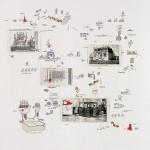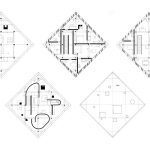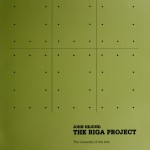From 1788 to 1833, Sir John Soane was the architect and surveyor of the Bank of England, his first major commission and the biggest work he had until retirement. During forty-five years the English architect would replace most of the rooms and largely extend the existing building while also being the responsible for all the repairs on the inside and outside and the integrations needed to respond to new safety norms. The building progressively expanded to occupy a whole block, an isolated island composed of a series of profoundly different rooms arranged around several courts.
John Soane’s works for the building can be subdivided into five phases: early works are mostly minor repairs; in the second phase, from 1791 to 1801, the offices in the East wing are rebuilt and a large extension to the North-East area is included. The third phase concerns the North-West wing, the directors’ parlours and some rooms around the Bullion Court. The fourth phase mostly consists in proposals to rebuild the elevations and a few minor repairs. The fifth and final phase, 1817 to 1833, includes the construction of the remaining halls in the East wing, and the rebuilding of parts of the facades.

The architecture of Bank of England focuses on a rich sequence of individual interior spaces that reinterpretate classical languag,e reducing it to rich volumes and simplified ornamental themes. Some of the rooms, like the Old Colonial Office and Consols Office, reveal as majestic vaulted volumes with natural light coming mostly form above and with references to classical themes of decorations.
Along with 44 models, an enormous number of drawings were created in relation to this complex project, the most famous being the “Bank of England represented as a ruin”, painted in 1830 by Joseph Gandy, artist and architect and Soane’s collaborator; a drawing which reflect both Gandy’s and Soane’s fascination with Roman ruins and Piranesi’s etchings.
In 1913 Sir Herbert Baker rebuilt the Bank of England, demolishing most of Sir John Soane’s building. Only an exterior wall on on Threadneedle Street, which includes a statue representing Soane, remains as the only standing fragment of the original project.

John Soane, Old Colonial Office in the Bank of England (1818)



John Soan, the Rotunda in the Bank of England, drawing by Joseph Gandy, built between 1794 and 1796






Joseph Gandy is the artist who depicted the Bank of England, I think “Michael” is his middle name.
corrected, thanks.